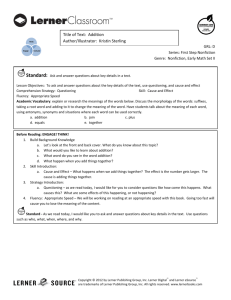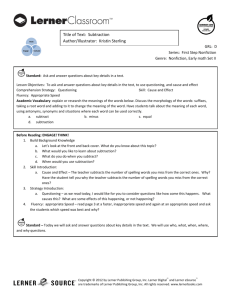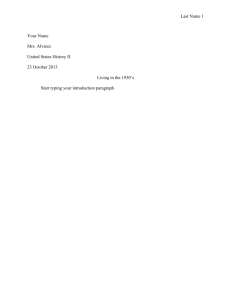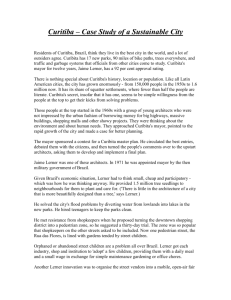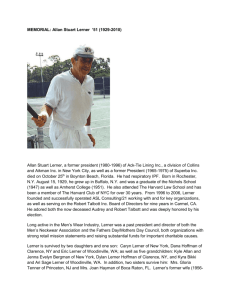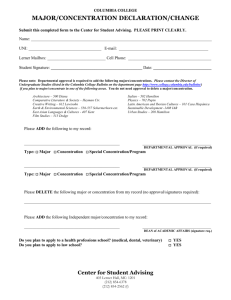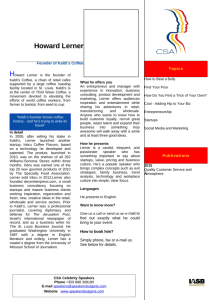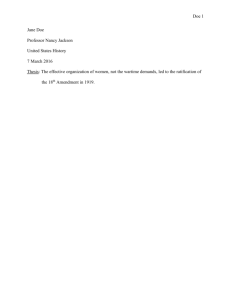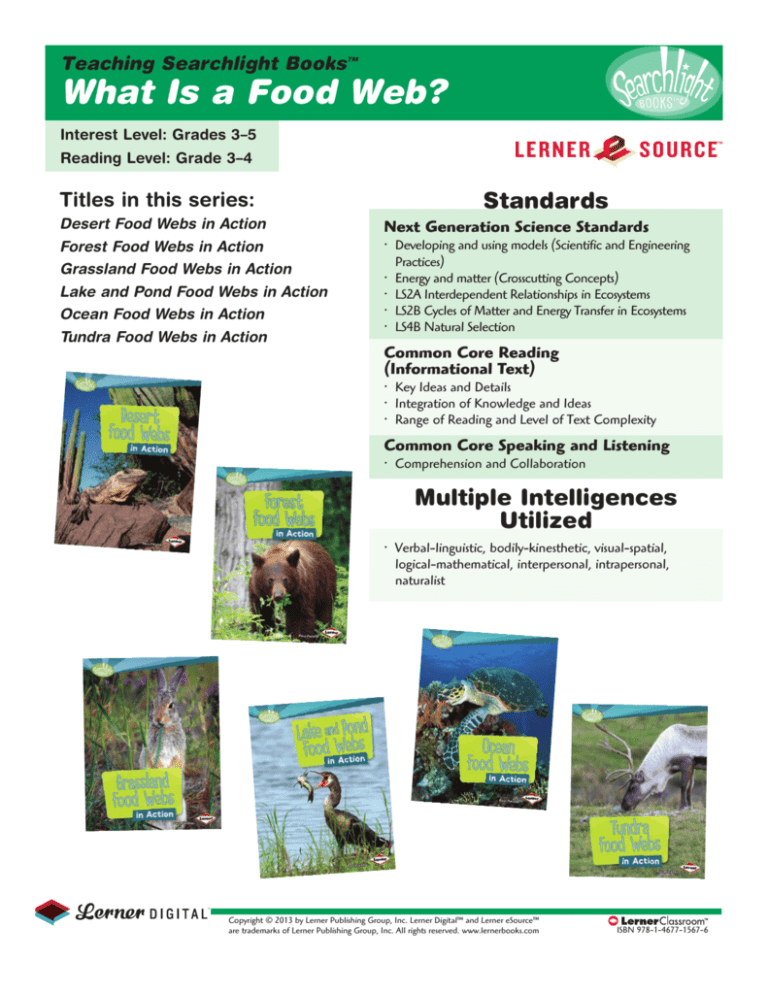
Teaching Searchlight Books™
What Is a Food Web?
Interest Level: Grades 3–5
Reading Level: Grade 3–4
Titles in this series:
Desert Food Webs in Action
Forest Food Webs in Action
Grassland Food Webs in Action
Lake and Pond Food Webs in Action
Ocean Food Webs in Action
Tundra Food Webs in Action
Standards
Next Generation Science Standards
• Developing and using models (Scientific and Engineering
Practices)
• Energy and matter (Crosscutting Concepts)
• LS2A Interdependent Relationships in Ecosystems
• LS2B Cycles of Matter and Energy Transfer in Ecosystems
• LS4B Natural Selection
Common Core Reading
(Informational Text)
• Key Ideas and Details
• Integration of Knowledge and Ideas
• Range of Reading and Level of Text Complexity
Common Core Speaking and Listening
• Comprehension and Collaboration
Multiple Intelligences
Utilized
• Verbal-linguistic, bodily-kinesthetic, visual-spatial,
logical-mathematical, interpersonal, intrapersonal,
naturalist
™
Copyright © 2013 by Lerner Publishing Group, Inc. Lerner Digital™ and Lerner eSource™
are trademarks of Lerner Publishing Group, Inc. All rights reserved. www.lernerbooks.com
ISBN 978-1-4677-1567-6
2
WHAT
TEACHING
IS
Lesson 1
Understand Diagrams
Materials
•What Is a Food Web? series
•Look at Diagrams p. 6
•pencils
Prepare
•Prepare to electronically show the
diagram in Look at Diagrams p. 6.
•Copy Look at Diagrams p. 6 for
each student. Alternatively, you
might ask students to copy the
questions into their notebooks
when you show the diagram
electronically.
Pretest
•What kinds of pictures and art can
you find in science books?
A
FOOD
WEB?
Purpose
Students will use diagrams to gather information.
•Why do you think science books
include pictures and art?
Model
•Show Look at Diagrams p. 6
electronically.
•Explain the purpose of a diagram
and point out major features, such
as the title, labels, caption, and
colors.
Practice
•Invite students to search for
diagrams in the What Is a Food
Web? books.
•Students will record where they
found each diagram and then
answer the questions in Look at
Diagrams p. 6.
Read
•Read a chapter of a What Is a
Food Web? book that contains a
diagram.
Discuss
•Did studying the diagram before
you read the chapter make it easier
to understand the information in
that chapter? Why or why not?
•Would you change anything on the
diagram? What would it be and
why?
•Which feature do you think is most
important on any diagram?
Evaluate
•Evaluate Look at Diagrams p. 6 for
completeness and accuracy.
™
Copyright © 2013 by Lerner Publishing Group, Inc. Lerner Digital™ and Lerner eSource™
are trademarks of Lerner Publishing Group, Inc. All rights reserved. www.lernerbooks.com
ISBN 978-1-4677-1567-6
3
WHAT
TEACHING
IS
Lesson 2
Energy in a Food Web
Materials
•What Is a Food Web? series
•Grasslands Energy Pyramid p. 7
•pencils
Prepare
•Copy Grasslands Energy Pyramid p.
7 for each student. Alternatively,
divide students into groups and
make one copy of Grasslands
Energy Pyramid p. 7 for each
group.
Pretest
•What is energy? Where does energy
come from? How do you use
energy?
Read
•Read books from the What Is a
Food Web? series.
A
FOOD
WEB?
Purpose
Students will learn about how energy is transferred
in an ecosystem.
Model
•Draw a pyramid on the board.
Divide the pyramid into four
horizontal parts. From bottom
to top, label the rows producers,
first-level consumers, secondlevel consumers, and third-level
consumers. Label the area below
the pyramid decomposers.
•Explain that scientists draw
pyramids like this to explain how
energy moves through a food web.
•Explain that energy gets lost
at each level of this pyramid.
Producers use energy to create
food. Consumers use it to move
around, keep warm, and have
babies.
•Ask students where they would put
a tree, a squirrel, a snake, and a fox
on the pyramid. Label these parts
of the food web on the pyramid.
Practice
•Students will cut out the boxes
from the bottom of Grasslands
Energy Pyramid p. 7.
•Students will glue the producers,
consumers, and decomposers on
the correct levels of the pyramid.
Discuss
•Why are there more living things at
the bottom of the pyramid?
•Why are there so few third-level
consumers?
•What has the most energy in the
food chain? Why do you think that
is?
Evaluate
•Collect Grasslands Energy Pyramid
p. 7 and assess for comprehension.
™
Copyright © 2013 by Lerner Publishing Group, Inc. Lerner Digital™ and Lerner eSource™
are trademarks of Lerner Publishing Group, Inc. All rights reserved. www.lernerbooks.com
ISBN 978-1-4677-1567-6
4
WHAT
TEACHING
IS
A
FOOD
Lesson 3
Build a Food Web
Materials
•What Is a Food Web? series
•old magazines or access to
online images and a printer
•poster paper
•paper
•crayons or colored pencils
•scissors
•glue
•pencils
Prepare
•Gather old nature magazines or
other magazines that include
pictures of plants and animals.
Alternatively, collect a list of
websites that have downloadable
pictures. A few examples include
www.exploringnature.org,
nationalgeographic.com, and
http://www.naturephotographers
.net/.
•Cut out or print pictures of a
producer, a consumer, and a
decomposer to model the activity.
•Divide students into six groups, one
for each book in the series.
WEB?
Purpose
Students will make a food web that shows
producers, consumers, and decomposers.
Pretest
•What is an environment?
•What are producers, consumers,
and decomposers?
•What is a food chain?
Read
•Read books from the What Is a
Food Web? series.
Model
•Explain that students will be
working in groups to make food
chains for different environments.
Assign a different environment to
each group.
•Invite students to look at p. 4 of
the What Is a Food Web? books
to see an example of a food web
diagram.
•Demonstrate how to glue the
pictures of a producer, a consumer,
and a decomposer to a larger sheet
of paper. Demonstrate how to
draw colored arrows between them
to represent energy movement.
Practice
•Groups will look through
magazines or websites to find
pictures of producers, consumers,
and decomposers in their assigned
environments. Students may also
draw their own pictures.
•Groups will cut out or print
pictures and glue them to poster
paper.
•Students will add colored arrows
and a key to their food web
posters to show how energy is
transferred between the plants and
animals.
Discuss
•Display the completed food webs
in the classroom.
•Do some plants or animals have
more connections than others?
Why do you think that is?
•Where would a human fit into this
food web?
Evaluate
•Evaluate completed food webs
for completeness and accuracy.
Evaluate how well groups worked
together to complete the
assignment.
™
Copyright © 2013 by Lerner Publishing Group, Inc. Lerner Digital™ and Lerner eSource™
are trademarks of Lerner Publishing Group, Inc. All rights reserved. www.lernerbooks.com
ISBN 978-1-4677-1567-6
5
WHAT
TEACHING
Lesson 5
Tundra Tag
IS
A
FOOD
WEB?
Purpose
Students will learn that food webs are constantly
fluctuating.
Materials
•What Is a Food Web? series
•Tundra Tag Directions p. 8
•green strips of paper
•brown, red, and yellow
construction paper
•string
•hole punch
•paper lunch bags
Prepare
•Cut seventy strips of green paper
to represent lichens.
•Cut the other colors of
construction paper into nametag-sized pieces. You will need
about sixteen yellow pieces for
lemmings, six red pieces for foxes,
and three brown pieces for bears.
Each student will get one of these
three colors, so adjust the numbers
accordingly.
•Punch holes in the top two corners
of the colored pieces of paper
and tie strings through the holes,
so students can wear them as
necklace-style identification tags.
•Arrange to use the gym or an open
playing field for the game.
•Plan to show Tundra Tag Directions
p. 8 electronically.
Pretest
•What happens to the plants and
animals in an environment if there
is a fire?
•What happens if one population
gets too large? What happens if it
gets too small?
Read
•Read books from the What Is a
Food Web? series, focusing on
Tundra Food Webs in Action.
Model
•Using the diagram on p. 4 of
Tundra Food Webs in Action,
describe a food web that contains
lichens, lemmings, foxes, and bears.
•Explain that students will play a
game to show what happens in this
ecosystem.
•The green paper strips represent
lichens. The yellow name tags
represent lemmings. The red tags
represent foxes, and the brown
tags represent bears. Each student
will play one of these roles in the
game.
•Review Tundra Tag Directions p. 8
with students.
Practice
•Play Tundra Tag.
Discuss
•Talk through the scenarios listed
at the bottom of Tundra Tag
Directions p. 8.
•Discuss how people fit into the
food web and the impact they can
have on the food web.
•Discuss the complexity of food
webs and ecosystems.
Evaluate
•Evaluate participation in the game
and students’ comprehension of
the topic.
™
Copyright © 2013 by Lerner Publishing Group, Inc. Lerner Digital™ and Lerner eSource™
are trademarks of Lerner Publishing Group, Inc. All rights reserved. www.lernerbooks.com
ISBN 978-1-4677-1567-6
6
Teaching What Is a Food Web?
Name
Date
Look at Diagrams
Directions: Use the diagram to answer the questions below.
HOW PHOTOSYNTHESIS WORKS
carbon dioxide
sunlight
oxygen
water
(from roots)
A water lily’s leaves turn sunlight, carbon
dioxide, and water into food for the plant.
1. What is the title of this diagram?
2. Write two of the labels used on this diagram.
3. What is happening in this diagram?
4. What is the purpose of this diagram?
Copyright © 2013 by Lerner Publishing Group, Inc. Lerner Digital™ and Lerner eSource™
are trademarks of Lerner Publishing Group, Inc. All rights reserved. www.lernerbooks.com
ISBN 978-1-4677-1567-6
7
12
Teaching What Is a Food Web?
Name
Grasslands Energy Pyramid
GrasslandsName
Energy Pyramid
3rd
Level Consumers
Third-Level
Consumers
2nd Level Consumers
Second-Level
Consumers
1st
Level Consumers
First-Level
Consumers
Producers
Producers
Decomposers
Decomposers
Teaching Food Webs
Copyright © 2013 by Lerner Publishing Group, Inc. Lerner Digital™ and Lerner eSource™
are trademarks of Lerner Publishing Group, Inc. All rights reserved. www.lernerbooks.com
ISBN 978-1-4677-1567-6
8
Teaching What Is a Food Web?
Tundra Tag Directions
Players: 20–30 students
Materials: identification necklaces (lemming, fox, and bear), brown bags (stomachs), green
paper strips (lichens)
Goal: To discover what happens to a food web under various circumstances.
1.Spread fifty green strips (lichens) around the playing area.
2.Hand out identification tags and brown bags to all the students.
3.(30 sec.) All lemmings enter the game. They try to get as many lichens in their stomachs
as possible.
4.(1 min.) All foxes enter the game. They try to tag the lemmings. If they tag a lemming,
the lemming has to give the fox all of their lichens. The fox puts the lichens in its own
stomach. The tagged lemming has to stand near the teacher.
5.(2–3 min.) All bears enter the game. They try to tag the foxes. If they tag a fox, the fox
has to give the bear all of its lichens. The bear puts the lichens in its own stomach. The
tagged fox has to stand near the teacher.
6.The teacher calls out “Freeze!” and has the players check their stomachs. Those without
food in their stomach have to stand near the teacher. As a class, discuss which animals
survived and which animals died.
Play the game again, using one of the following scenarios:
• There has been a fire on the tundra. Lichens burn quickly and grow back slowly. Play the
game with half the number of lichens. Discuss the result of the fire after the game.
• A disease has spread through the lemming population. Many of them died. Play the game
with half the number of lemmings. Discuss the effect of disease on a food web.
• A wildlife restoration project was started in the tundra. People were not allowed to walk
or drive over the tundra surface. Lichens and other plants slowly grow back. Add twenty
lichens to the game and play. Discuss how this impacts the food web.
Copyright © 2013 by Lerner Publishing Group, Inc. Lerner Digital™ and Lerner eSource™
are trademarks of Lerner Publishing Group, Inc. All rights reserved. www.lernerbooks.com
ISBN 978-1-4677-1567-6

